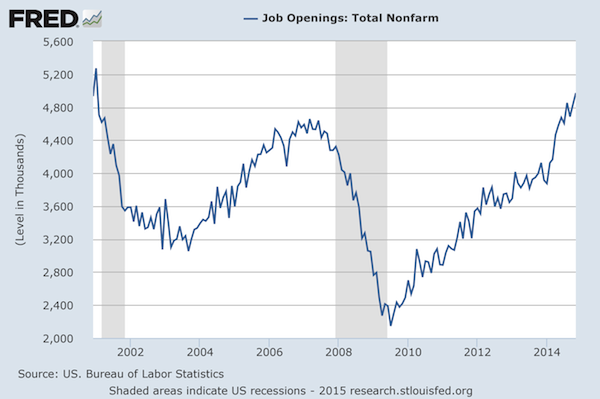

In the middle of every month, the Bureau of Labor Statistics releases data on the number of job openings, the number of workers who have changed jobs, and the number of job separations. Economists focus on the job openings data the most, because increases in job openings tend to mean that the economy is growing and that wages are likely to rise. (Yes we should be amused at economists terrified that rises in wages are inflationary and are delighted that future wage increases mean strong economic growth. Good thing economists only have two hands.) The following charts show how job openings have been on a steady rise since the beginning of the recovery in mid-2009, and have now passed the recent peak when the recession began at the end of 2007. But that was a long time ago, and population has grown since that time. The 2000s have a long way to go to catch up with population-adjusted job openings since the turn of the century. Monthly job openings were about 1.8% of population then, and now it's climbed to 1.56%. Recovering to this level took six years. At that rate, it may take three more years to reach turn-of-the-century levels. There are enough economic red flags in the worldwide economy to believe that the next steps higher might be just as difficult.









